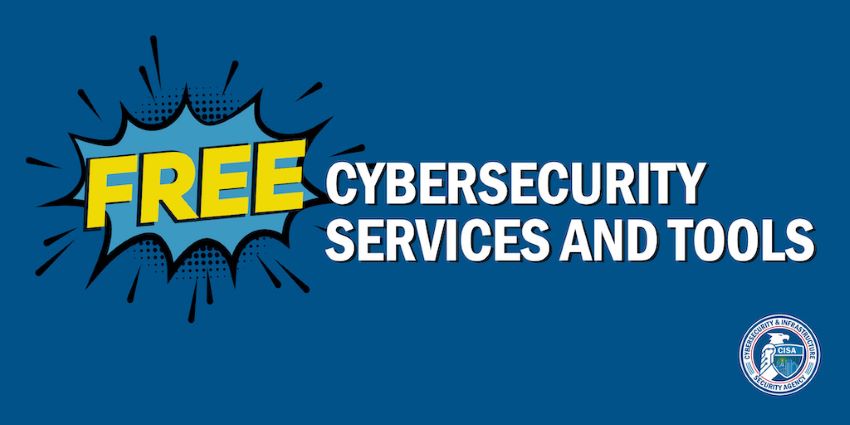Free Cybersecurity Services and Tools | CISA
Free Cybersecurity Services and Tools


As part of our continuing mission to reduce cybersecurity risk across U.S. critical infrastructure partners and state, local, tribal, and territorial governments, CISA has compiled a list of free cybersecurity tools and services to help organizations further advance their security capabilities. This living repository includes cybersecurity services provided by CISA, widely used open source tools, and free tools and services offered by private and public sector organizations across the cybersecurity community. CISA will implement a process for organizations to submit additional free tools and services for inclusion on this list in the future.
The list is not comprehensive and is subject to change pending future additions. CISA applies neutral principles and criteria to add items and maintains sole and unreviewable discretion over the determination of items included. CISA does not attest to the suitability or effectiveness of these services and tools for any particular use case. CISA does not endorse any commercial product or service. Any reference to specific commercial products, processes, or services by service mark, trademark, manufacturer, or otherwise, does not constitute or imply their endorsement, recommendation, or favoring by CISA.
Foundational Measures
All organizations should take certain foundational measures to implement a strong cybersecurity program:
- Fix the known security flaws in software. Check the CISA Known Exploited Vulnerabilities (KEV) Catalog for software used by your organization and, if listed, update the software to the latest version according to the vendor’s instructions. Note: CISA continually updates the KEV catalog with known exploited vulnerabilities.
- Implement multifactor authentication (MFA). Use multifactor authentication where possible. MFA is a layered approach to securing your online accounts and the data they contain. When you enable MFA in your online services (like email), you must provide a combination of two or more authenticators to verify your identity before the service grants you access. Using MFA protects your account more than just using a username and password. Why? Because even if one factor (like your password) becomes compromised, unauthorized users will be unable to meet the second authentication requirement, ultimately stopping them from gaining access to your accounts.
- Halt bad practices. Take immediate steps to: (1) replace end-of-life software products that no longer receive software updates; (2) replace any system or products that rely on known/default/unchangeable passwords; and (3) adopt MFA (see above) for remote or administrative access to important systems, resources, or databases.
- Sign up for CISA’s Cyber Hygiene Vulnerability Scanning. Register for this service by emailing vulnerability@cisa.dhs.gov
- . Once initiated, this service is mostly automated and requires little direct interaction. CISA performs the vulnerability scans and delivers a weekly report. After CISA receives the required paperwork, scanning will start within 72 hours and organizations will begin receiving reports within two weeks. Note: vulnerability scanning helps secure internet-facing systems from weak configurations and known vulnerabilities and encourages the adoption of best practices.
- Get your Stuff Off Search (S.O.S.). While zero-day attacks draw the most attention, frequently, less complex exposures to both cyber and physical security are missed. Get your Stuff Off Search–S.O.S.–and reduce internet attack surfaces that are visible to anyone on web-based search platforms.
Free Services and Tools
After making progress on the measures above, organizations can use the free services and tools listed below to mature their cybersecurity risk management. These resources are categorized according to the four goals outlined in CISA Insights: Implement Cybersecurity Measures Now to Protect Against Critical Threats:
- Reducing the likelihood of a damaging cyber incident;
- Detecting malicious activity quickly;
- Responding effectively to confirmed incidents; and
- Maximizing resilience.
Reducing the Likelihood of a Damaging Cyber Incident
Take Steps to Quickly Detect a Potential Intrusion
Ensure That The Organization is Prepared to Respond if an Intrusion Occurs
Maximize the Organization's Resilience to a Destructive Cyber Incident


No comments:
Post a Comment